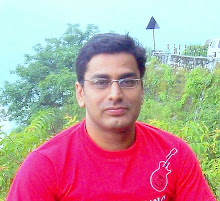RESEARCH WITHOUT BARRIERS
Tuesday, July 22, 2008
 THE GLOBAL MOVEMENT seeking open access to credible research reports took a significant step forward when the National Institutes of Health (NIH) in the United States recently unveiled its Public Access Policy that urges the scientific community to provide universal access to work funded by the state. Advocates of free access as defined by the Budapest Open Access Initiative of 2002 generally welcomed the NIH move — which encourages researchers to file copies of their peer reviewed articles within 12 months of acceptance by a journal, and choose a date for their dissemination through the Internet. As a concept, open access has found supporters even among some private sponsors of medical research. The question of removing barriers has long been debated against the background of the high cost involved in subscribing to quality journals; there are nearly 28,000 international journals and the more expensive ones are priced around $20,000 a year. The policy approach of the NIH therefore marks a progressive step, however limited, for medical professionals and scientists, and also organisations representing patients with chronic conditions such as HIV/AIDS, cancer, arthritis, Down's syndrome, and a variety of rare disorders.
THE GLOBAL MOVEMENT seeking open access to credible research reports took a significant step forward when the National Institutes of Health (NIH) in the United States recently unveiled its Public Access Policy that urges the scientific community to provide universal access to work funded by the state. Advocates of free access as defined by the Budapest Open Access Initiative of 2002 generally welcomed the NIH move — which encourages researchers to file copies of their peer reviewed articles within 12 months of acceptance by a journal, and choose a date for their dissemination through the Internet. As a concept, open access has found supporters even among some private sponsors of medical research. The question of removing barriers has long been debated against the background of the high cost involved in subscribing to quality journals; there are nearly 28,000 international journals and the more expensive ones are priced around $20,000 a year. The policy approach of the NIH therefore marks a progressive step, however limited, for medical professionals and scientists, and also organisations representing patients with chronic conditions such as HIV/AIDS, cancer, arthritis, Down's syndrome, and a variety of rare disorders.
Advocacy for open access is growing with expanding connectivity to the Net. It has generated debate on the high cost of publishing research articles. The meticulous scrutiny involved in the process of publication is cited as a reason for the high cost of journals. Authors sometimes are required to pay page charges for getting their scientific work published in journals, although most of them are aided by project funds or other grants for the purpose. Happily, these concerns are not beyond resolution, as the most famous model of open access publishing, the Public Library of Science (PLoS), has demonstrated over the past couple of years. PLoS has set for itself the goal of giving any scientist, physician, patient or student anywhere in the world unlimited access to the latest scientific research. In keeping with this credo, its co-founder and Nobel laureate Harold Varmus has hailed the NIH policy as a "significant and positive step." While PLoS is not the first or only forum to enable open access to articles (there are over 1400 quality controlled open access journals listed in major directories), it took the idea forward by leveraging the strengths of the Internet and evolving its own model that welcomed original submissions from scientists for peer review and publication. Authors who can afford it pay a $1,500 fee to meet the costs, but this can be waived for scientists from the developing world. PLoS and its journals of Biology and Medicine have understandably won acclaim in the world of science.
Given the growing base of national medical and scientific research, India's open access advocates will no doubt be inspired by the NIH initiative and seek similar and stronger direction in domestic policy approaches. Important work is carried out in specialised institutes and a part of the university system in India. While most national journals are affordable, international publications are, as a rule, beyond the reach not merely of scientists in specialised fields but of most colleges and universities as well, given their meagre library budgets and the large number of journals they need to subscribe to. One solution will be to permit and encourage authors to archive their publications on the Internet, and offer their peer reviewed articles, free of charge, to reference libraries within a reasonable time frame for release in the public domain. That will ensure the integrity of research and also enable the community of scientists and other users worldwide to share knowledge much more equitably — by drawing on a broad searchable base of research.



0 comments:
Post a Comment